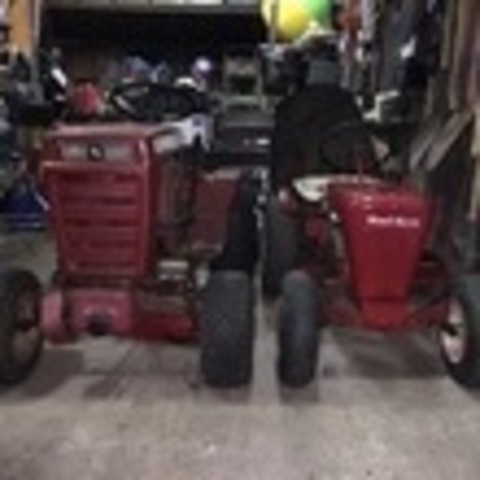Countdown To Christmas!
|
|

-
Similar Content
-
 By BuffaloD200
By BuffaloD200
Hey all, I need to install a drive belt on my 75 D180 for my snowblower. I've looked through a bunch of D-series owner's manuals, and none seem to mention replacement procedure. The PTO pulley is fixed, save for engaging the PTO and there is minimal movement at the snowthrower pulley. There's no idler or tensioner as far as I can tell. Do I have to remove the PTO pulley? That seems to be a required service item.
Same question for my 80 D200 as well really.
Using the recommended 4L490W belt.
Thanks
-
 By Crazy Old Red Horse
By Crazy Old Red Horse
Barn find 1975 D180. 608 original hours. Tractor and 48” belly mower look to be still in their original paint. Rear 60” finish mower looks like it has had one coat of new paint added at some point. Open to trades. Please email me with any questions or for additional photos. 35 miles north of Pittsbugh.
-
 By JasonMc
By JasonMc
Hi guys, I purchased my firs WH - a 1976 C-120 Automatic. I have a steep hill on my property and before I go down the hill, I want to understand how my braking system works. I’m aware that this year/model didn’t include disc brakes, so is the breaking purely hydraulic Via transmission and controlled by the speed lever? Has anyone encountered issues with this? Is it safe to use on a steep hill? Any input is greatly appreciated. Thanks!
Jason
-
 By Brian33
By Brian33
Hello,
I am hoping someone can help my. I recently acquired a c160 for the engine for another tractor. So I did a motor swap and wanted to see what the hydro was like. I put a plow on it C-160 (which now has a 12hp engine on it). I did a quick test run and everything was good. I drained the fluid and change the filter (Napa 1410 filter and sae 30 transmission fluid as it stated to only use this fluid on the tractor.) everything was working great after the fluid change. I plowed two driveways and the sidewalks near my house... all the sudden the tractor would not go forwards or in reverse. I tried to pick the plow up and nothing... I checked my drive belt it was turning like it should. I started to push the tractor and the rear was engaged so it would not move. Of course I was 400’ from my driveway and the plow was down which made it fun. I put the tractor in forward and started to push it and the thing took off. So I hopped on and took it to the front of the garage. I put it in revers and it cut out again so I pushed it in the garage. Today I went out to check the tow valve. I took it out and cleaned the threads up put it back in and it did not change anything. According to the dipstick I have the proper amount of fluid in it. I did have a drip that I fixed on the cylinder still nothing... does anyone out there have any tips to help me out? I’ve never had a transmission like this only manual transmissions. The model of this transmission is the sundstrand 90-1140.
Any help would be greatly appreciated.
Brian
-
 By MS GENERAL REPAIR
By MS GENERAL REPAIR
Good Morning Ladies & Gents;
I operate a Small Engine & Power Equipment Repair Shop From my home in Bridgeport, Ct.
Yesterday I started repairs on a 1984 +- Wheel Horse C-145 Automatic Lawn & Garden Tractor.
I decided this would be a good candidate for a repair video series on my new Youtube channel. Since the repairs on this tractor are not the usual carb cleaning & belt replacements.
Someone suggested that the Wheel Horse enthusiasts on this site might find this information useful and I hope that's the case.
Problems I'm aware of and being addressed include........... Motion Works Linkages, Hydraulic Implement Controls, Brakes & Parking Brake, Mower Blade Mounting, and whatever else I find as repairs progress.
Repair Video's have been a tremendous help to me on all types of things that I don't have a service manual for, and if this helps someone then the effort will be well worth it.
As I post this there are 4 video's in the series. More will be added in the coming days.
If you find the video's helpful please like, comment & subscribe, so I can mold the channel into a useful resource. It takes a lot of extra time to video document repairs, so it's good to know if it's worth it.
This Tractor belongs to a repair client and is Not For Sale
Good Luck With Your Repair Projects..........................Mike
-
